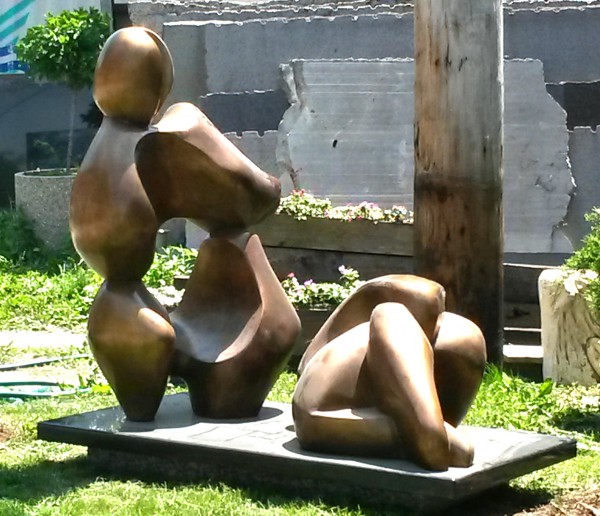
Edition of 3, size 52 x 28 x 46 in
Jean Jacques Porret
Most of Jean Jacques Porret’s abstract contemporary sculptures begin with a simple sketch, even sometimes just a scribble. If the drawing, loosely playing off the human form, proves compelling, he may return to it–tracing and retracing certain lines, reinforcing some lines or forms while others recede or merge. He visualizes the forms in three dimensions and ultimately commits the image to clay in his Chicago-based home studio. There he pursues a particular proportion, fluid curves, an inner balance, some ineffable sense of “rightness” until the piece feels whole, which he describes as “rhythm in space.” While Porret’s sculptures are often named for attitudes–such as “Flirt,” “Flamboyante,” and “Galantry”–or musical elements–such as “Farandole,” “Fugue,” and “Boheme”–the works themselves defy definition, born out of and appealing to more intuitive interpretations.

Edition of 5, size 19 in height
Jean Jacques Porret
Since the 1970s, many of Porret’s pieces, cast in bronze and averaging 10 to 18 inches tall, have found their way to tabletops and galleries around the world. Others, enlarged to three or more times their original size, populate outdoor private gardens. Permanent homes include galleries in Michigan, Florida, and Colorado and with clients such as Chicago’s luxury Peninsula Hotel. Regardless of their destiny, however, Porret’s goal is the same: “I create sculptures that I like to live with, which are pleasing to the eyes and touch. Proportion is essential to that. Whether it’s a piece of furniture, a car or a sculpture, that’s what I am looking for.”
Consistent with the Swiss-born artist’s intuitive process, Porret, while practiced in stone carving and other sculpting methods, prefers the sensual—if unpredictable—outcome of bronze cast in the lost wax technique, where each step is more demanding and more risky than any other sculpting method. That’s not to say that Porret, an engineer by training, leaves much to chance. “It does help me to understand how things fit together,” he says, but that’s where the value of his formal training ends.

Edition of 3, size 7 x 7 x 16 ½ in
Jean Jacques Porret
While Porret’s early sculptures reveal influences from Giacometti, Arp, Moore, and others, today’s sculptures are more fluid, more full and free from outside influences. “It is extremely difficult not to be influenced,” Porret says and today his sculptures are his own. While pieces such as “Farandole,” “Vivace,” and “Compromise” reveal aesthetic and geometric silhouettes, others such as “Opulence,” “Rocambolesque,” and “Devotion” find Porret striking bold horizontal lines through the figures, disrupting the otherwise integral forms.
Porret’s characteristic intuitive approach just may be the key to his technique. “It’s all a continuation of where I started,” he says of his fiercely independent vision.